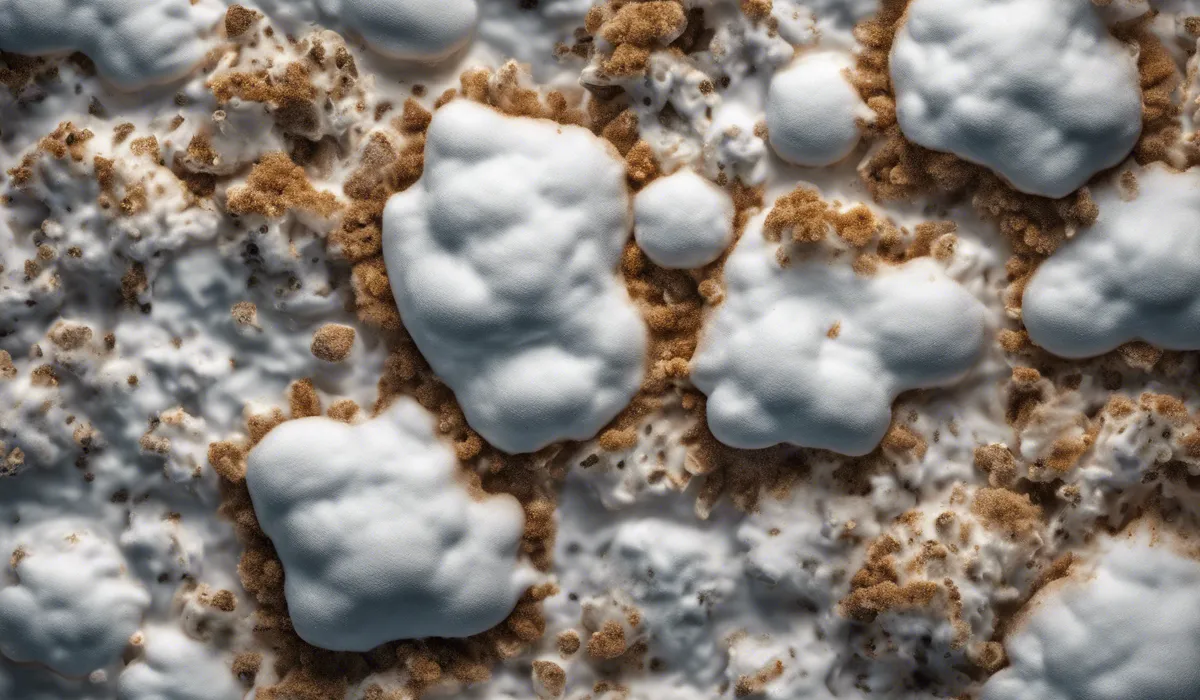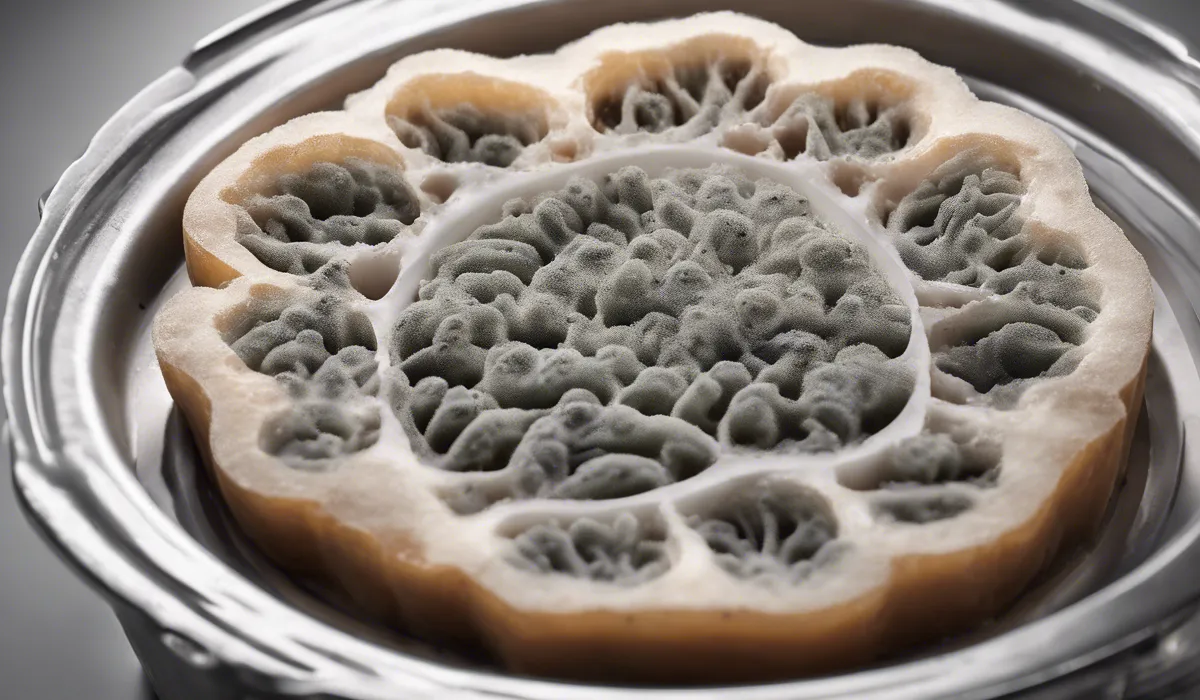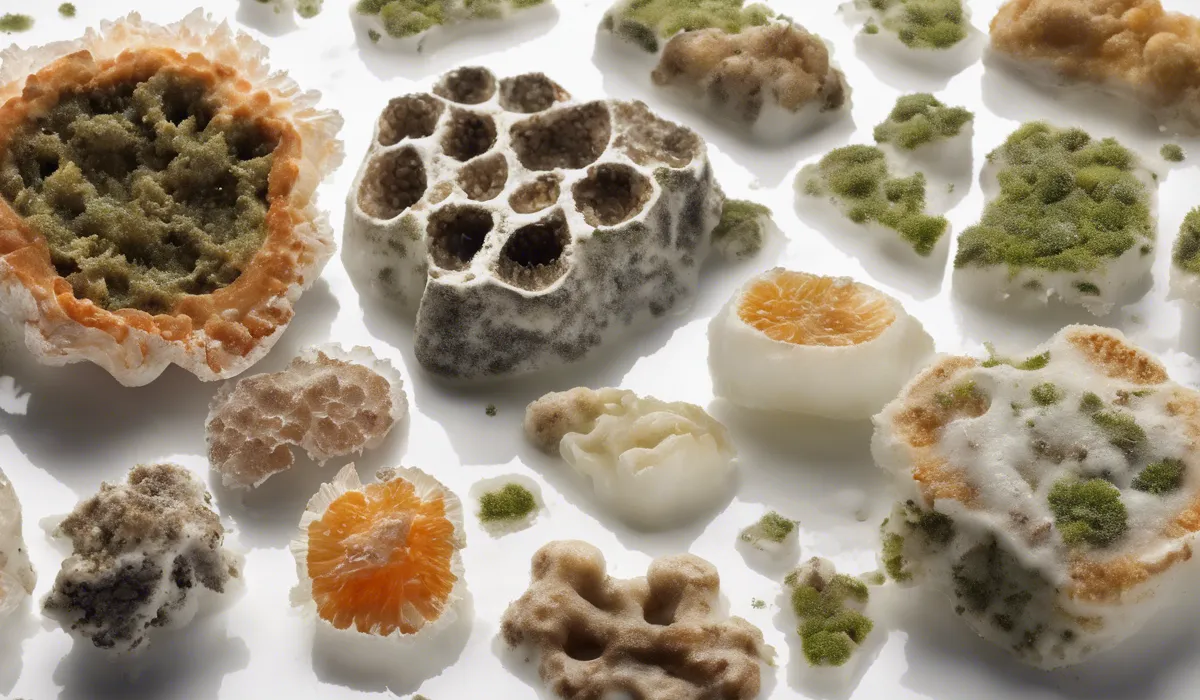Mold grows on food due to moisture, warmth, and nutrients, creating ideal conditions for spores to thrive. These fungi feed on organic matter in foods, leading to decay. Proper storage reduces mold growth risk.
Science Behind Mold Growth on Food

Understanding Mold: A Microscopic Menace
Mold is a type of fungus, similar to mushrooms you might see in the woods, but it behaves quite differently.
It is tiny and often invisible to the naked eye until it forms large colonies. Mold exists almost everywhere, both indoors and outdoors, and plays a crucial role in nature by breaking down dead organic matter.
However, when it finds its way onto our food, it becomes a problem.
Creating the Perfect Home for Mold
Mold loves to grow where it’s warm, moist, and full of nutrients. Foods provide an excellent source of these nutrients, and when they are stored in warm and damp places, molds seize the opportunity to settle in and multiply.
Think of it like mold’s favorite vacation spot—if the conditions are just right, it will stay and invite all its friends!
How Mold Multiplies: A Tiny World
The reproductive cycle of mold begins with spores, which are like tiny seeds that can travel through the air.
When these spores land on a food item that has the right conditions, they germinate, sending out tiny threads called hyphae.
These threads spread out to form a network, a bit like the roots of a plant, which is known as mycelium. This network can quickly cover the food’s surface and penetrate deep into it, causing the mold to grow and the food to decay.
Foods Most Vulnerable to Mold’s Invasion
Certain foods are mold magnets due to their high moisture and nutrient content. Breads, cheeses, fruits, and vegetables are often the first to succumb to mold.
These foods are like all-you-can-eat buffets for mold, offering everything it needs to thrive.
Soft fruits and vegetables, in particular, can become moldy very quickly, especially when they are bruised or damaged, which gives mold an easy way in.
Factors Contributing to Mold Development in Food Storage

Storage Woes: Temperature and Humidity Troubles
When food is stored in warm and humid places, it’s like rolling out the red carpet for mold. Refrigerators set at incorrect temperatures and cupboards in damp areas are prime spots for mold to grow.
Keeping your food in a cool, dry place is key to making it less inviting for these unwelcome guests.
Packaging’s Role in the Battle Against Mold
The way food is packaged can make a big difference in how long it stays fresh. Packaging that locks out moisture and air helps to protect food from mold.
On the other hand, packaging that traps moisture or is easily punctured can invite mold growth. Choosing the right packaging is a simple yet effective way to safeguard your food.
Influence of Food Composition and pH Levels
Not all foods are created equal when it comes to resisting mold. Foods with high sugar or acid content, like jams and pickles, are less prone to mold, while those that are more neutral or alkaline can be more susceptible.
The pH level of food can affect how quickly mold will grow, so understanding this can help you make better storage decisions.
Stopping Cross-Contamination in Its Tracks
Keeping moldy foods away from fresh ones is crucial. Mold spores can easily spread from one item to another, turning your kitchen into a mold paradise.
Ensuring that foods are stored separately and that any moldy items are promptly thrown away can help stop the spread of mold to other foods.
Preventive Measures and Safe Practices

Storage Strategies to Keep Mold at Bay
Proper food storage is your first line of defense against mold. Refrigerating perishable items, keeping dry goods in airtight containers, and using foods before their “best by” dates can greatly reduce the risk of mold growth.
Remember, the less time food spends in the danger zone of warm temperatures, the less chance mold has to take hold.
Hygiene Habits to Halt Mold
Cleanliness is key in preventing mold. Regularly cleaning your fridge, cupboards, and countertops removes potential mold spores and keeps your food safe.
Washing your hands before handling food and using clean utensils can also help prevent the spread of mold from one food item to another.
Deciding When to Ditch Moldy Food
It’s important to know when to throw away moldy food. Mold can produce toxins that aren’t always destroyed by cooking.
For most foods, if you see mold, it’s safest to discard them. Hard cheeses and firm vegetables may be exceptions, as you can cut away the moldy part and still use the rest. When in doubt, though, it’s better to be safe and toss it out.
Preserving Food: Natural and Artificial Methods
Preservatives can extend the shelf-life of food by preventing mold growth. These can be natural, like vinegar and salt, or artificial, which are often found in processed foods.
Freezing is another great method to keep food fresh for longer periods. By understanding and using a variety of preservation techniques, you can keep your food safe and delicious for as long as possible.
FAQs About Why Mold Grows on Food
What causes mold to grow on food?
Mold grows on food due to the presence of moisture, warmth, and nutrients, which create ideal conditions for mold spores to germinate and thrive.
How does mold feed on food?
Mold feeds on organic matter in foods by breaking it down into simpler substances, leading to food spoilage and decay.
Why does mold grow faster on some foods than others?
Mold grows faster on foods that are high in moisture and nutrients, as these conditions are more conducive to mold development.
Can proper food storage prevent mold growth?
Yes, proper food storage, such as refrigeration and airtight containers, can significantly reduce the risk of mold growth by limiting exposure to moisture and warmth.
Is all mold on food visible to the naked eye?
Not always; while some mold is easily visible as fuzzy growths on food surfaces, other mold may not be visible until it has significantly proliferated.
Final Thoughts
Mold growth on food is fostered by moisture, warmth, and available nutrients, which together create a hospitable environment for mold spores. These fungi naturally decompose organic matter, leading to food spoilage.
Effective storage measures are key to mitigating the risk of mold development on food products.
